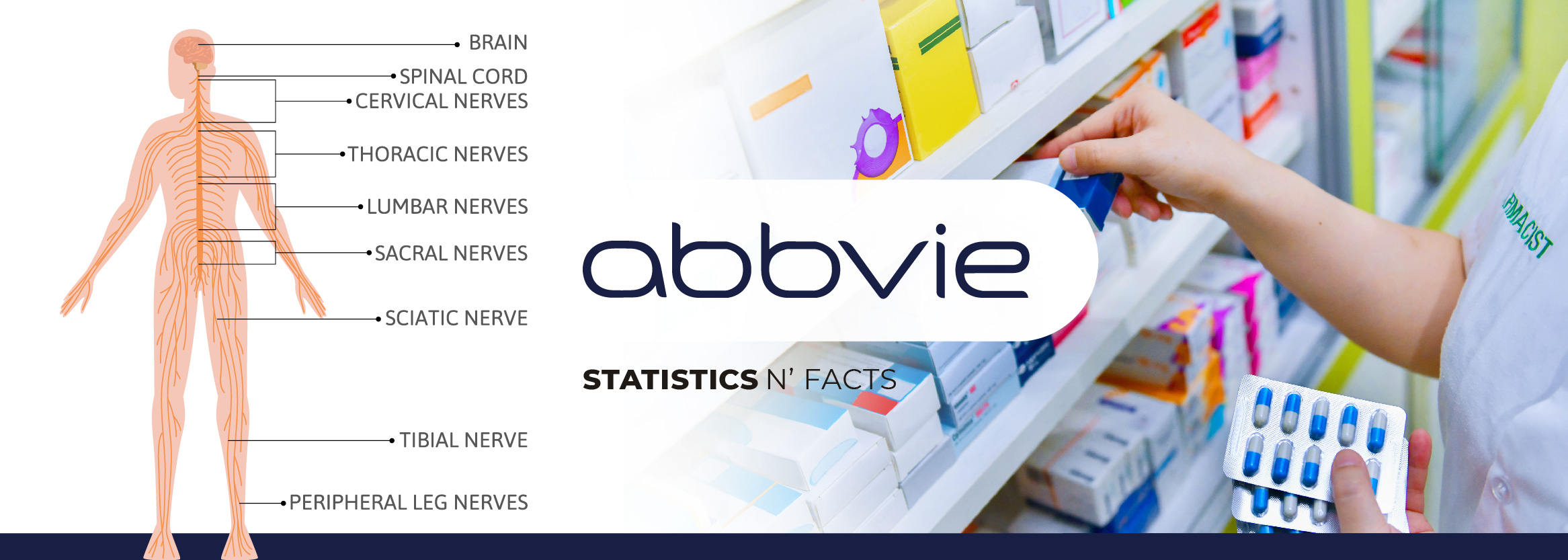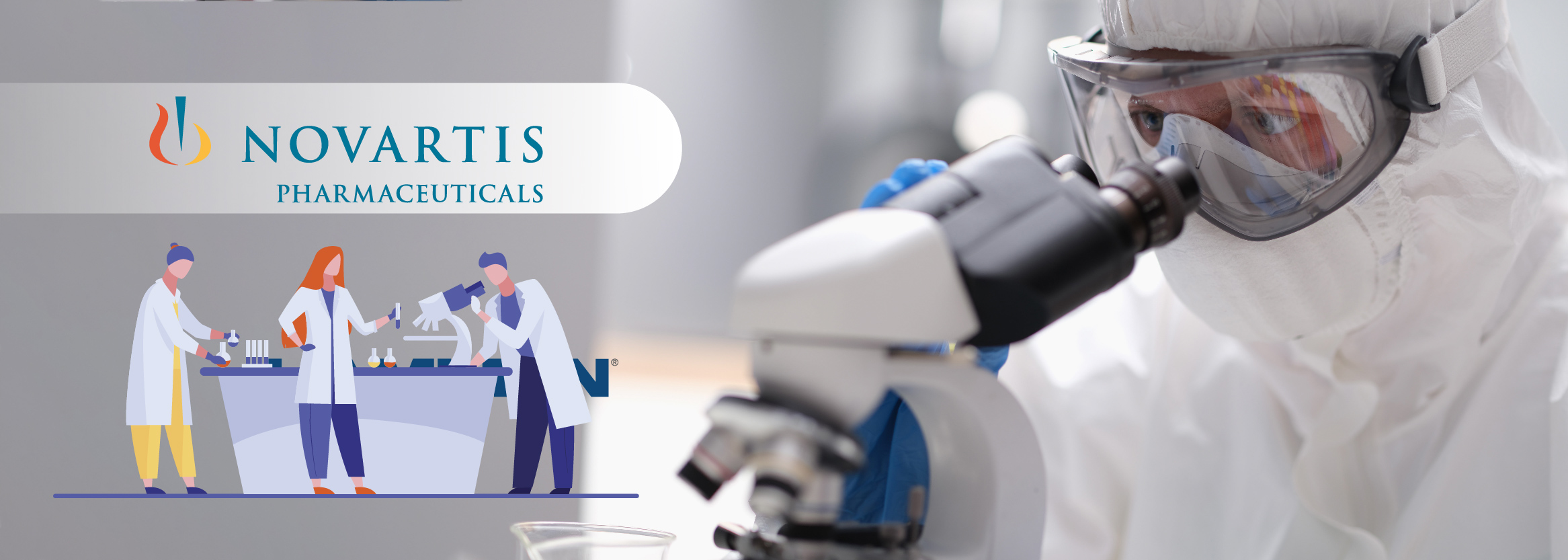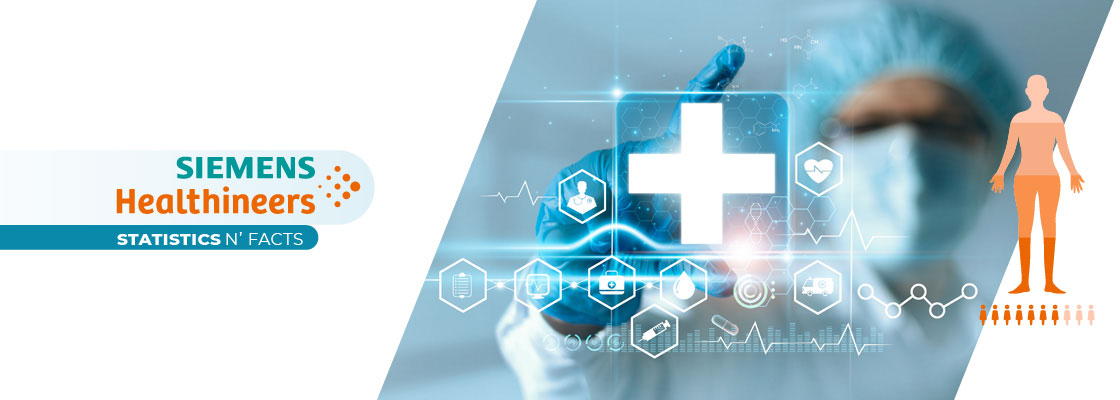AbbVie Statistics: AbbVie Inc. is an international, multi-disciplinary, research-based biopharmaceutical business. With a product portfolio that includes leaders in immunology and hematologic cancerology, neuroscience, aesthetics, and eye care, AbbVie Inc. has the potential to be a successful company. AbbVie Inc. utilizes its unique innovation approach, dedication, and expertise to create and market innovative therapies for some of the most severe and complex diseases on the globe. The company was established in Delaware on April 10, 2012. AbbVie Inc. became a public-traded, independent company on January 1, 2013. This was due to the distribution by Abbott Laboratories of 100% of AbbVie’s outstanding common stock.
AbbVie Inc.’s global business segment is dedicated to the creation, commercialization, production, sale, and research of new medicines and therapies. This structure allows the Chief Operating Decision Maker (CODM), as the Chief Executive Officer to manage resources and assess performance globally in order to reach long-term strategic objectives. In line with this structure, the supply chain organization and global research and developmental organization are responsible for the development, manufacturing, and supply of products. These products can be distributed by geographical regions or therapeutic areas to coordinate commercial efforts. Global corporate administrative staff supports all these activities.
At a Glance
- Number of Employees Worldwide: Approximately 50,000 in 2022
- AbbVie treats 26+ million patients annually in more than 200+ nations.
- All over the world, there are 22 primary research and manufacturing plants
- 450+ AbbVie patient support programs globally
- 1 in 7 employees of AbbVie is more likely to have a doctoral than the 1 in 25 American workers.
Locations
Africa: Algeria, South Africa, Sub-Saharan Africa, and Tunisia.
Asia-Pacific: Australia, China, Hong Kong, Japan, Korea, Malaysia, New Zealand, Singapore, and Taiwan
Europe: Austria, Belgium (FR | NL), Bosnia & Herzegovina, Croatia, Bulgaria, Denmark, Czech Republic, Finland, Germany, France, Greece, Ireland, Hungary, Italy, Norway, Netherlands, Poland, Romania, Portugal, Russia, Slovakia, Serbia, Slovenia, Swede, Spain, Switzer, Ukraine, Turkey, and the United Kingdom.
Latin America / Caribbean: Mexico, and Puerto Rico.
The Middle East: Israel, Lebanon, Saudi Arabia, and UAE
North America: Canada (EN | FR) and the United States
South America: Argentina, Brazil, Chile, Colombia, and Uruguay
Research and Development
AbbVie Inc. has made a substantial investment in the research and development, of many compounds and complement devices that are currently in clinical development. This includes potential treatments for complex, potentially life-threatening diseases. AbbVie has a better ability to find and develop new compounds because it uses integrated discovery-development project teams that include chemists as well as biologists, doctors, and pharmacologists. It also works with academic institutions, biotechnology companies, pharmaceutical companies, and other organizations to identify promising new treatments that can be added to its portfolio. AbbVie also makes acquisitions to enhance its research and development efforts.
The discovery phase of research and development focuses on finding the right molecule to treat a disease. If a compound’s preclinical testing proves to be successful, it can then move to clinical development.
- Phase 1:- Involves the first human test in a limited number of healthy volunteers and patients to evaluate the safety, tolerance, and doses for future phases.
- Phase 2:- Examines the efficacy of different drug doses in a specific disease state.
- Phase 3:- Tests the drug that has shown positive results in previous phases with a significantly larger patient group to confirm safety and efficacy to be approved for global use. The process of research and development from discovery to the launch of a new drug can take anywhere between 8-12 years or more. Research and development of new pharmaceutical products are fraught with uncertainty. There is no way to know when or if a drug or indication will be approved for regulatory approval.
- Phase 4:- Trials are sometimes called post-marketing research. They can be used in addition to new products, delivery systems, or new formulations. Clinical trials are used to collect additional information, such as data about the risks and benefits, of approved drugs.
2022 Strategic Objectives
AbbVie Inc. is committed to discovering and developing innovative medicines and products that address serious health issues and the medical challenges of tomorrow, while also achieving outstanding financial performance through outstanding execution.
Hopes to achieve its strategic goals by:-
- Immunology revenue expansion driven by increasing market shares and expanding indications of SKYRIZI, RINVOQ, and HUMIRA U.S. Sales growth.
- An increase in market share and increased indication expansion of VENCLEXTA will drive revenue growth in hematology.
- Growth in revenue from aesthetics driven by Botox and JUVEDERM Collection’s global expansion and greater market penetration.
- VRAYLAR Botox Therapeutic and UBRELVY have driven neuroscience revenue growth. AbbVie’s current portfolio of eye care products will be used to maintain eye care leadership.
- The positive impact of pipeline indications and products that were recently approved, or are currently under regulatory review. This approval is expected to be in 2022.
AbbVie will continue to drive growth in operating margins. The company expects to accomplish this goal through the continued realization of expense savings from the Allergan acquisition.
Technology
Protein-Based Technologies
Combining or “Conjugating” antibodies with small molecule drugs are one way to increase the therapeutic potential of these antibodies. This enhances their ability to target specific antigens. The use of technology that allows for the creation of dual specific antibodies to target two antigens can also increase their therapeutic potential.
Antidrug Conjugate (ADC) Technology
ADCs are a proven technology platform that delivers therapeutic agents directly to the site it is needed. This is done by precisely targeting an antibody. An ADC is a combination of a powerful toxin and monoclonal antibodies. It can then be delivered directly to cancer cells while sparing normal tissue. ADCs are not a new idea, but recent developments in target identification and antibody engineering, linker chemicals, and toxin tech have made them a promising platform. AbbVie is a leader in the development of monoclonal antibody-specific monoclonal antibodies.
Meltrex Technology
It is a common problem when drugs don’t dissolve well in water. AbbVie Inc. was able to apply the melt extrusion technologies that have been used in industrial settings over centuries to medicine. This opened up new possibilities for developing new drugs to treat patients suffering from various diseases, such as viral infections or cancer.
Bispecific Platform
This technology is very promising. This was previously known as the DVD platform. The platform can actually produce many different bispecific formats. DVD is just one example. These bispecific formats offer a wide variety of biological and protein binding properties. Oncology views the bispecific platform not as a route to combination therapy but rather as a way to create new biology.
Statistics
AbbVie Inc.’s Global Revenue
This figure shows AbbVie Inc.’s revenue between 2010 and 2021. AbbVie Inc. earned revenue in excess of 56,000 million U.S. dollars in 2021.
AbbVie Inc.’s Revenue, by Region
This statistic shows AbbVie Inc.’s revenue from 2012 to 2021 by region. AbbVie Inc. earned revenue in the United States of 43,510 million U.S. dollars in 2021.
AbbVie Inc.’s HUMIRA Revenue
This chart shows HUMIRA’s revenue from 2011 through 2021. AbbVie Inc.’s top product was HUMIRA, which generated 20,694 million U.S. dollars in revenue in 2021.
AbbVie Inc.’s Total Assets
This figure shows AbbVie Inc.’s total assets from 2010 to 2021. AbbVie Inc.’s total assets were 146,529 million U.S. dollars in 2021.
AbbVie Inc.’s Net Earnings
This figure shows AbbVie Inc.’s net earnings between 2010 and 2021. AbbVie Inc. had net earnings of 11,549 million U.S. dollars in 2021.
AbbVie Inc.’s R&D Expenditure
This statistic shows AbbVie Inc.’s expenditures on research and innovation between 2012 and 2021. AbbVie Inc. spent 7,084 million U.S. dollars on research and development in 2021.
AbbVie Inc. Global Workforce
This statistic shows how many employees AbbVie Inc. had between 2013 and 2022. It was calculated as of January 31, each year. AbbVie Inc. had approximately 50,000 employees worldwide as of January 31, 2022.
Recent Developments:
2022
- AbbVie announced that the U.S. Food and Drug Administration granted Breakthrough Therapy Designation to Telisotuzumab Vedotin, in January for the treatment and prevention of cancer.
- AbbVie bought Syndesi Therapeutics SA in Belgium, which was founded in March.
- AbbVie obtained US FDA approval in May to use RINVOQ to treat adults with the active ankylosing syndrome.
- AbbVie partnered with Sirona Biochem in June to develop and commercialize top-of-the-line skin care products that are based on active components.
2021
- AbbVie entered into a partnership and licensing agreement with Caribou Biosciences in February to develop and test chimeric-antigen receptor (CAR-T) cell therapeutics.
- AbbVie signed a March agreement to purchase PINK1 Compound, a Mitokinin product.
- AbbVie announced that they had purchased a 16.7% stake in Evolus in February.
- Allergan Aesthetics launched SkinMedica Neck Correction Cream in April.
- AbbVie & Caraway Therapeutics partnered together to develop and commercialize Caraway’s small molecule therapeutics targeting TMEM175, for Parkinson’s Disease, in June.
- AbbVie Pharmaceutical Trading (Shanghai) Co Ltd was formed in June with Zhongchao Inc to promote the advancement of medical education.
- AbbVie rescinded its exclusive rights to the TeneoOne acquisition and TNB-383B acquisition in June.
- AbbVie’s subsidiary Allergan obtained approval from the U.S. Food and Drug Administration to expand the label of BOTOX to include eight muscles for the treatment and prevention of upper limb spasticity.
- Calico and AbbVie expanded their partnership to find, develop, and commercialize innovative treatments for age-related diseases in July.
- AbbVie and Mission Therapeutics partnered in August to research selected deubiquitinating enzyme target compounds. This collaboration will be used to advance their neurodegenerative diseases collaboration.
- AbbVie and Pfizer joined forces in July to create an online resource that links rare protein-coding variants to human disease and health.
- AbbVie has been approved by the US Food and Drug Administration (FDA) for QULIPTA, an anti-migraine for adults.
- AbbVie partnered with REGENXBIO in September to create and commercialize RGX-314, a treatment for chronic retinal diseases like macular degeneration and diabetic retinopathy.
- AbbVie extended its collaboration with the University of Chicago in November to support preclinical and clinical oncology research up through 2025.










